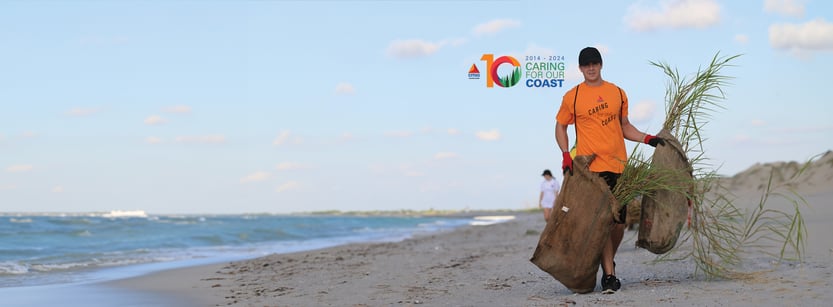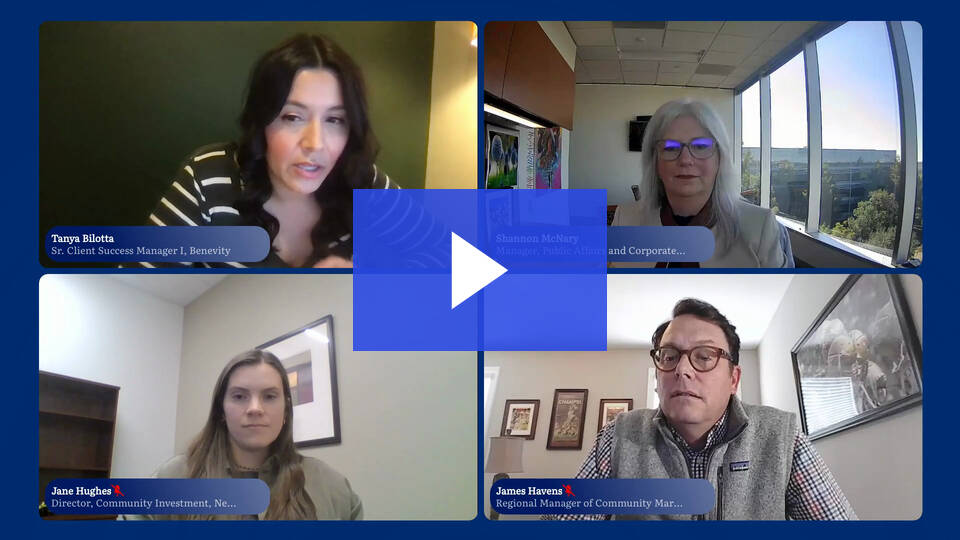9 Best Practices to Engage Your People in Granting For More Impact
Practical tips from 3 companies with standout
employee-led granting programs

Published on July 24th, 2024
Social impact has evolved over the past few years with employees increasingly wanting a say in where their companies give. In fact, 86% of employees agree that customers, employees and investors should have the opportunity to be involved in corporate giving.
That’s why many companies are rising to meet employee expectations, evolving their social impact programs beyond employee giving and volunteering to involve their people in strategic granting decisions, too.
In this post we’ll cover three best-in-class examples of companies championing employee-driven granting programs. Along the way they’re fostering greater inclusivity and community and business impact.
Strategic granting on the rise
More and more companies surveyed in The State of Corporate Purpose 2024 are engaged in strategic granting. What that means in practice is they’re:
- Tying impact strategy more directly to their core focus pillars, strengths and corporate values.
- Embedding a diversity, equity and inclusion (DEI) lens to their granting programs for broader access and greater long-term accountability.
Top cause categories by grants dollars:
How leading companies engage their people to amplify granting impact
CITGO employees review proposals, make funding recommendations
CITGO is a refiner, transporter and marketer of transportation fuels and petrochemicals with more than 3,000 employees. Two of the company’s core community investment focus areas are STEM education (to help increase the talent pipeline of their workforce) and environmental restoration and protection.
CITGO gets employees engaged in their strategic grants program by:
- Assembling employee grant review panels to evaluate proposals.
- Having employees review and score all applications using a rubric.
- Discussing collaboratively all the proposals and the impact they may have in the communities
where CITGO’s people live and work. - Incorporating employee recommendations into final funding decisions.
Best practice #1: Include employees with relevant subject matter expertise in
grants review panels.
For example, CITGO invites employees who work in HR and STEM ambassadors to review the STEM grant applications. For the environmental granting program panel, they invite members of the environmental team and volunteers who are passionate about environmental causes to take part.

Best practice #2: Use technology to manage employee involvement in the grant application review process.
CITGO uses Benevity's grants management solution to manage their grants panels, creating a committee review report with links to all proposals. Employees in the panels can review proposals, input scores using a rubric and remain engaged in the decision-making process.
Dive into our webinar on Engaging Employees in Grantmaking to learn more.
Best practice #3: Train employees to review grant applications and make funding decisions.
Start with a very specific request for proposal to establish clear goals, objectives and outcomes from the outset. From there, create a rubric for employees to evaluate proposals against (e.g., does the nonprofit serve within your operational area, does it meet specific KPIs). Then the employee (who knows the needs of their communities well) and the CSR team (who are well-versed in funding decisions) can work in partnership on a joint decision.
Newrez employees apply for grants on behalf of nonprofits, complete impact reports
Newrez is a US-based mortgage lender and servicer. A core company value is “care fiercely,” which extends into all four pillars of their social impact program: volunteer time off and dollars for doers, matching gifts and campaigns, community councils and their granting program. While each pillar is employee-driven, the grants program truly stands out.
Newrez gets employees engaged in their strategic grants program by:
- Allowing any employee with a passionate interest in a cause — and who can demonstrate
involvement or connection to a local nonprofit — to apply for a grant on behalf of the nonprofit. - Including employees at all levels to vote on and approve funding decisions as part of the grant
review committee. - Having the nonprofit and their nominating employee be notified at the same time if they are successful in their grant application, thereby sharing in the award celebration.
- Offering opportunities for employees to introduce nonprofits to the wider company, either
through their company-wide Speakers Series or by leading a volunteer event. - Having employees complete an impact report 6 months after funding, to provide an overview
of how the grant funds were used and the impact they’ve had.
Best practice #4: Include your
employees in impact reporting.
Ninety percent of impact leaders surveyed in The State of Corporate Purpose 2024 said that more impact data will increase investments. So go ahead and encourage your employees to get involved in quantifying the impact of the initiatives they lead.

Best practice #5: Brainstorm ways to include employees in each stage of
your granting process.
Aim to keep your people in the loop about everything, including administrative matters like payment logistics. This makes the process more real and encourages them to stay engaged for the long haul.

Best practice #6: Know your audience.
If you’re new to employee-led granting, start with your employees and survey them to find out what they’re interested in. Find out who they are, where they live, who serves on a nonprofit board and who volunteers regularly. You can even tap your DEI team and employee resource groups (ERGs) for additional recommendations. Together this information will provide a good baseline to make your
grantmaking program more inclusive.
Dick’s Sporting Goods engages stores and their teams at a local level
Dick’s Sporting Goods is a leading retailer serving athletes and outdoor enthusiasts. Over 40,000 team members share a belief that sports changes lives. Supporting teams, leagues and athletes throughout the United States and reducing barriers to play like infrastructure, registration fees, league costs, and equipment are core components of their social impact program.
Dick’s Sporting Goods gets employees engaged in their strategic grants program by:
- Creating a Store Community Grants Program as a way to get teammates at their 900 stores
across different chains and communities involved in community investment. - Giving each store a budget and responsibility for sourcing, soliciting, vetting and providing a grant
to a nonprofit organization within their own community. - Offering opportunities for employees to have pep rallies to support and celebrate the
funded nonprofits.
Best practice #7: Foster ongoing engagement between employees and
the nonprofit who receives the grant.
Make grant-giving fun through celebrations and initiatives that offer more ways to support nonprofits in ways they need all year long. For example, a volunteer clean-up day if funding a climate nonprofit can help keep the momentum going.

Best practice #8: Embed diversity into your grantmaking program.
Regardless of what your strategic goals are for the year, it’s always a good idea to bring a DEI lens to your program and align your granting with those initiatives. For example, during heritage months, like Black History Month and AAPI (Asian American & Pacific Islander) month, provide a grant to an organization doing work across those demographics.

Best practice #9: Use a scoring model to guide employees to successful grant applications.
For companies that receive a lot of granting requests from employees (Dick’s Sporting Goods, for example, receives 30,000+ a year), funding them all isn’t feasible. How Dick’s Sporting Goods manages this is by building out score cards though Benevity - with scoring criteria based on set parameters - to guide teammates when submitting grant applications and reduce the number of ineligible proposals.
Amplify your impact by engaging
your employees in granting
If you’re looking to amplify your impact, including employees in your strategic granting decisions, alongside your giving and volunteering initiatives, is a good place to start.
From embedding diversity into your program to aligning granting decisions with your people’s passions, employee-led granting drives deeper connection to your community investment activities and business.
Find out how Benevity’s grants management solution can help engage your people and track the growth and impact of your corporate grants to build a stronger and more streamlined CSR program.
.



